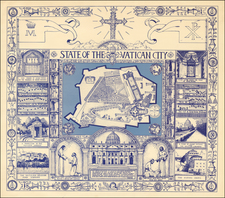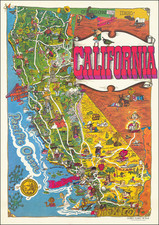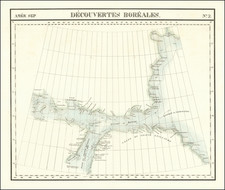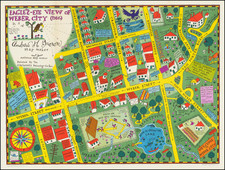Scarce Wenceslaus Hollar's "Der Adler und die Schildkröte," or "The Eagle and the Turtle," is an enchanting piece of artistry that, despite its deceptively simple title, encapsulates a world in miniature. As part of the collection "Kleinere Kupfer zum Aesop" ("Small Engravings for Aesop"), this engraving offers a visual narrative that combines elements of natural history, cartography, and fable.
Issued in about 1665 by John Ogilby, the engraving's central focus is a globe, oriented with the North Atlantic Ocean at the center, offering a view of eastern North America, the Caribbean and northeastern South America on the left, while Europe, Africa, the North Polar regions, the British Isles nearly at the center. This wide geographical scope implies a sense of universality, suggesting that the scene above the globe is not confined to a specific location but resonates globally.
Above this intricate terrestrial representation, the titular eagle and turtle appear, albeit not in the expected context. The eagle, a symbol of power and freedom, is depicted in flight, its wings wide-spread. In its talons, it carries a turtle, an embodiment of perseverance and patience. Despite their relatively small size, these figures draw attention due to their symbolic potency and the action they represent.
The juxtaposition of the eagle and the turtle delivers a striking contrast. The turtle, typically earthbound and associated with solidity and slowness, is lifted into the air, the domain of the swift and powerful eagle. This interaction mirrors the Aesopian fable, where the eagle uses cunning to break the otherwise impenetrable defense of the turtle.
Hollar's technical prowess is evident in the precise lines and stippling that shape the globe and its geography, as well as in the textures of the eagle's feathers and the turtle's shell. His ability to balance such minutiae with the larger composition shows a masterful understanding of engraving techniques.
The present image is state 2, Pennington 373.











![[ Map of Modern Europe in Faces ] Карта современной Европы въ лицаx](https://storage.googleapis.com/raremaps/img/small/98887.jpg)


